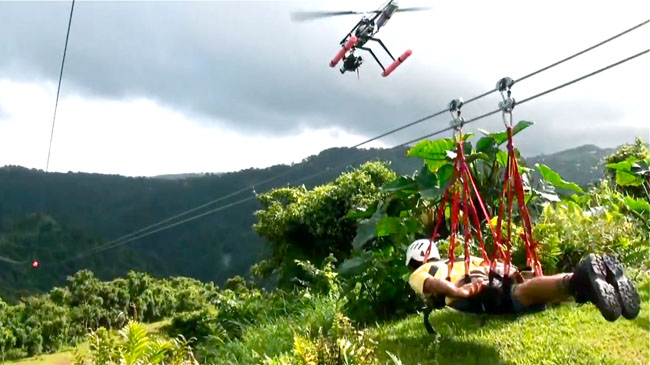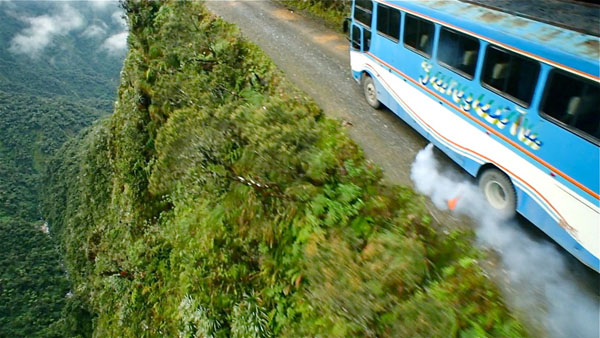
Introduction to R/C Helicopters
Radio-controlled (R/C) helicopter-based aerial photography is arguably one of the most versatile forms of aerial photography available. The camera can be controlled extremely accurately and can be positioned to obtain angles not available to full-sized aircraft.
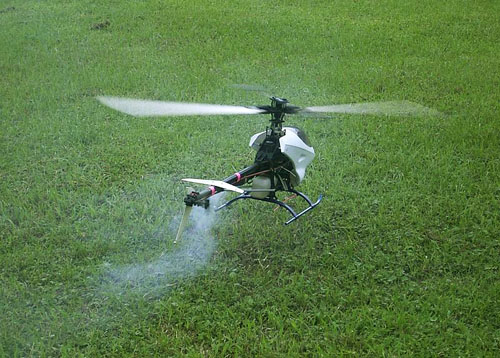 Radio-controlled helicopters are available in a variety of sizes and at a wide range of prices. A reasonably large hobbyist's model suitable as a stable platform for aerial photography might cost between £1,000 and £2,000. The various models are categorized by rotor size. For aerial photography a minimum rotor size is about 500 mm although a larger rotor size, such as 800mm, is likely to be more stable and handle better in wind. Larger and more sophisticated helicopters, typically used for commercial applications and equipped with three-axis, gyro-stabilized gimbals and HD cameras, cost much more - perhaps £15,000 - £20,000.
Radio-controlled helicopters are available in a variety of sizes and at a wide range of prices. A reasonably large hobbyist's model suitable as a stable platform for aerial photography might cost between £1,000 and £2,000. The various models are categorized by rotor size. For aerial photography a minimum rotor size is about 500 mm although a larger rotor size, such as 800mm, is likely to be more stable and handle better in wind. Larger and more sophisticated helicopters, typically used for commercial applications and equipped with three-axis, gyro-stabilized gimbals and HD cameras, cost much more - perhaps £15,000 - £20,000.
Basic considerations are your objectives, whether the helicopter can lift the payload (camera) to be used, stability, and purchase price and maintenance costs. Choose a larger rotor size where possible as the helicopter will ultimately repay the additional expense in terms of stability, handling and picture quality. However, bear in mind that the cost of repairs following an accident increases with rotor size. Following an incident, a small machine might typically be repaired for £50 whereas the repair of a larger machine might cost hundreds of pounds.
Flying ability is a big factor, so beginners are well advised to gain experience with modest helicopters to avoid becoming disheartened by repeated repair bills. Note that the experience required includes not only flying ability but also competence as a helicopter mechanic. Helicopters are complicated machines.
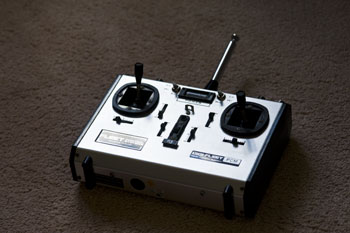
The image on the left shows a typical R/C transmitter used by a helicopter pilot to control the machine. The controls themselves are proportional and relatively simple in concept, but not necessarily as easy to use as they might appear. A typical transmitter and receiver combination might have a range of about one mile, a distance much greater than necessary simply because the human eye cannot monitor the movements of a small helicopter accurately or safely at a distance greater that a few hundred yards.
R/C Helicopters - Advantages and Disadvantages
The use of radio control helicopters for aerial photography photography has a number of advantages and disadvantages when compared to the use of full-sized helicopter or fixed-wing aircraft. Four-rotor designs, such as the small model shown below, have proved to be stable and hence popular.
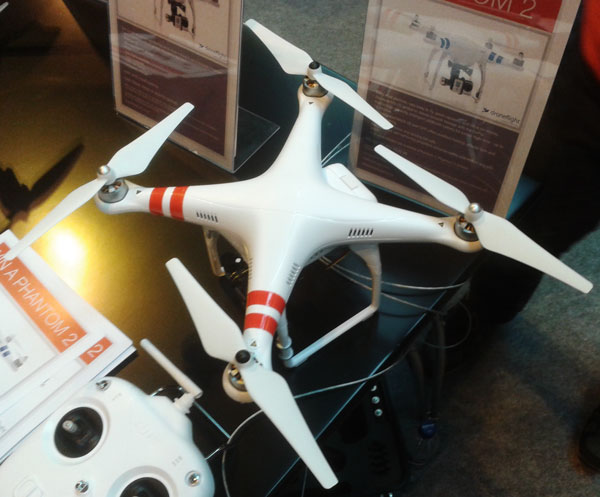 Technology has moved on very rapidly, and off-the-shelf helicopters are now available with cameras mounted in three-axis gimbals. Movement of the camera is controlled by a servo linked to the helicopter's radio receiver. This gives a remote operator the ability to tilt the camera up or down, and even rotate it on it’s axis by 360 degrees. A digital camera's shutter can also be operated remotely, and a video downlink can be provided so that the operator can see the shot live as the helicopter is positioned.
Technology has moved on very rapidly, and off-the-shelf helicopters are now available with cameras mounted in three-axis gimbals. Movement of the camera is controlled by a servo linked to the helicopter's radio receiver. This gives a remote operator the ability to tilt the camera up or down, and even rotate it on it’s axis by 360 degrees. A digital camera's shutter can also be operated remotely, and a video downlink can be provided so that the operator can see the shot live as the helicopter is positioned.
Principal advantages are:
- Cost - R/C helicopter operations are significantly cheaper than those using full-sized aircraft;
- No airfield is required;
- R/C helicopters can fly at any altitude up to about 500ft but full-size commercial aircraft may limited to operations above 500 - 1,000 feet.. Flying closer to a subject reduces problems with haze.
- R/C helicopter operations are less time consuming, quieter and generally more environmentally friendly than those involving full-size aircraft;
- The quality of images or video produced using modern equipment, such as sophisticated gimbals ans image stabilization, is the same as that obtained from full-size aircraft.
- Disadvantages include:
- Operational limits imposed by wind and poor weather;
- A maximum operational altitude of a few hundred feet;
- The need to operate in the presence of ground-based hazards, such as trees and aerial.
Cameras and Mounts
Cameras intended for use in R/C helicopter aerial photography have a wide range styles and technical specifications. Some are very expensive but can be used to take and store one hour of HD video. Others are much cheaper and intended for amateur use. They should therefore be selected with a particular type of work or objective in mind. However, the key feature of most cameras is that they are small and lightweight.
Cameras are designed so that they do not interfere with the radio control of the helicopter itself, and many are equipped with technology that enables recorded video and images to be transferred to a computer via a USB connector. Those that are intended for video recording as well as for capturing still images are equipped with large GB-capacity memory cards. Amateur cameras intended for recreational use can be purchased for less that £60 but high-end models intended for professional use may cost thousands of pounds.
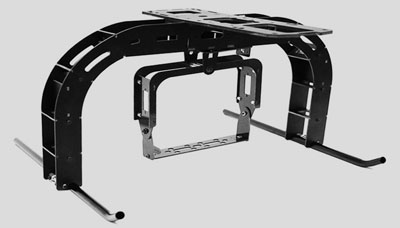
Mounts and gimbals are almost as varied and complex as the cameras themselves! The picture below shows a basic underslung mount, but front mounts are also available. The choice of underslung or front mounting is determined by objectives and personal preference. Some pilots claim that front mounted cameras are more isolated from vibration, which is an important consideration, and that they allow more convenient shooting angles. The weight of a front-mounted camera can be offset by positioning batteries under the tail of the helicopter. Gimbals are controlled using a second radio system usually operated by the photographer, leaving the pilot to fly the helicopter. They are available as two-axis and three-axis models and provide excellent control and positioning for the camera. As always, quality costs money! The more expensive models are likely to give better stability, smooth operation and greater reliability.
Sophisticated flight stabilization systems are now available for remote controlled helicopters and, where used, provide for a much more stable photography platform. Autopilot systems capable of flying a helicopter without manual intervention are also available at a price. They rely upon programmed GPS waypoints and provide good stability and safe operation.
Example Images
The aerial image below shows an R/C helicopter, equipped with a sophisticated camera mounted on a gyro-stabilized gimbal which is also remotely controlled. The camera lens also has its own image stabilization. In this instance, the helicopter is following a zip-wire rider travelling across a valley in the El Yunque rainforest. The work was undertaken by HeliVideo for a Puerto Rican tourism commercial.
Bolivia's North Yungas road, also known as El Camino de la Muerte (The Road of Death), is a 43 mile single-track route leading from La Paz, the country's capital city, to Coroico located 35 miles northeast of La Paz in the Yungas region. A second route known as Chulumani Road connects La Paz to Chulumani, located 40 miles to the east, is considered to be almost as dangerous.
The road is a muddy single track with no guard rails and precipitous drops at its outer edge. It has many hairpin bends. Loose rocks fall from the steep mountainsides above the road and visibility is restricted by rain, fog and cloud formation. The drivers of vehicles heading downhill are obliged to give way to vehicles travelling in the opposite direction and must pass on the outer side of the road. The width of the road is such that passing is possible only in certain places, and with the wheels of the unfortunate outer-side vehicle positioned just a few inches from the crumbling edge of a 2,000-foot precipice.
The Yungas road sees an average of one accident every two weeks, resulting 200 - 300 deaths per year. On 24 July 1983 a bus veered off the road into a canyon, killing more than 100 passengers. This tragic incident was probably Bolivia's worst road accident.
The image below was taken from an R/C helicopter during filming of The Road of Death for the Discovery Channel's documentary series Hell Roads.
Images by kind permission of Eric Austin - www..helivideo.com






